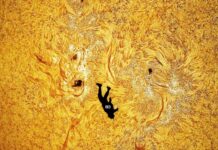As our cities expand and skyscrapers dominate the skyline, a curious phenomenon emerges: the urban heat island. Step foot into a bustling metropolis, and you’ll immediately sense a palpable difference in temperature compared to the surrounding countryside.
Welcome to the world of urban heat islands, where concrete reigns and the mercury soars. Let’s delve into this captivating environmental phenomenon that affects our cities and the people within them.
The Heat Island Effect
Imagine a scorching summer day in the heart of the city. As the sun beats down, buildings, roads, and pavement absorb its rays like sponges, transforming them into sweltering heat.
This heat is not easily released, and as a result, urban areas retain warmth even after sunset. This phenomenon, known as the urban heat island effect, gives rise to noticeable temperature disparities between cities and their rural counterparts.
Urbanization’s Role
Heat Absorption: The concrete jungle is a master at heat absorption. Unlike the lush green fields and forests found in rural areas, urban landscapes feature materials like concrete and asphalt that excel at capturing and retaining heat.
Depleted Greenery: Urbanization replaces nature’s green canopy with towering buildings, leaving a limited space for trees and plants. These natural elements act as nature’s air conditioners, releasing moisture through evapotranspiration and cooling the air around them.
Human Impact: It’s not just the physical structures that contribute to urban heat islands but also the activities that take place within. Industrial processes, vehicular emissions, and the voracious energy consumption of cities generate additional heat, exacerbating the temperature disparity.
The Albedo Effect: A scientific term for the reflectivity of surfaces, the albedo effect plays a significant role in urban heat islands. Natural surfaces, such as grass and soil, tend to reflect a substantial amount of sunlight. However, man-made materials like concrete and asphalt have lower reflectivity, absorbing more solar radiation and transforming it into heat.
Urban Geometry: The urban geometry of cities often creates “urban canyons,” where tall structures obstruct natural airflow. This restriction inhibits ventilation and traps heat, intensifying the urban heat island effect.
Read More: ResearchED: How Extreme Heat Will Affect Different Sectors Of Indian Economy
Implications and Solutions
The consequences of urban heat islands reach far beyond mere discomfort. They place a burden on energy consumption, amplify health risks associated with extreme heat, degrade air quality, and even alter local climate patterns. However, solutions exist to combat this warming trend.
Green Oasis: Incorporating green spaces into urban planning can work wonders in mitigating the heat island effect. Parks, rooftop gardens, and tree-lined streets offer shade, enhance evapotranspiration, and provide relief from the scorching urban heat.
Cool Roofs and Pavements: Embracing innovative materials with higher reflectivity can help combat heat absorption. Cool roofs and pavements reflect sunlight, reducing surface temperatures and minimizing the overall urban heat island effect.
Sustainable Urban Design: A holistic approach to urban planning prioritizes natural ventilation, optimal street layouts, and smart building design. By enhancing airflow and reducing the canyon effect, cities can create a more comfortable and sustainable environment for residents.
As cities continue to expand and urbanization shapes our landscapes, understanding the urban heat island effect becomes increasingly crucial. By recognizing the factors that contribute to this phenomenon and implementing thoughtful urban planning strategies, we can create more livable cities that are resilient to rising temperatures.
Let us pave the way for cooler, greener, and more sustainable urban environments.
Image Credits: Google Images
Sources: National Geographic, News18, Nature Journal
Find the blogger: @DamaniPragya
This post is tagged under: urban heat island, heat island effect, urbanization, greenery, heat
Disclaimer: We do not hold any right, copyright over any of the images used, these have been taken from Google. In case of credits or removal, the owner may kindly mail us.





































